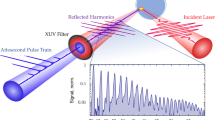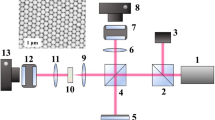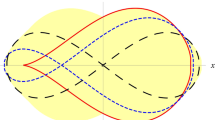Abstract
THERE have recently been some very interesting developments in the theory of the propagation of electromagnetic waves through resonant media, which may have a bearing on the origin of pulsars1–3. Theories of anomalous dispersion usually assume that the resonant systems can be regarded as harmonic oscillators. This is already an approximation, for most transitions in atomic systems involve precisely two energy levels—upper and lower—rather than a ladder of equally spaced energy levels which characterizes a harmonic oscillator. The difference is of little consequence when the exciting radiation is weak, but when it is intense theory suggests that there will be striking differences. For example, an incident continuous wave of uniform amplitude may emerge as a succession of equally spaced pulses of radiation. In broad terms, what happens is that an intense wave, on resonance, will take an atom initially in its ground state to its excited state and back down again coherently. In the first part of the cycle, energy is taken from the wave, to be returned to it in the latter part of the cycle. So if the incident wave is of uniform intensity the intensity does not stay uniform as the wave progresses into the resonant medium. The detailed theory, which is as yet incomplete, suggests that the distortion of the wave can be so great that it will emerge as a succession of pulses.
This is a preview of subscription content, access via your institution
Access options
Subscribe to this journal
Receive 51 print issues and online access
$199.00 per year
only $3.90 per issue
Buy this article
- Purchase on Springer Link
- Instant access to full article PDF
Prices may be subject to local taxes which are calculated during checkout
Similar content being viewed by others
References
Arrechi, F. T., Degiorgio, V., and Someda, C. G., Phys. Lett., 27A, 588 (1968).
Lamb, G. L., Phys. Lett., 25A, 181 (1968).
McCall, S. L., and Hahn, E. L., Phys. Rev. Lett., 18, 908 (1967).
Author information
Authors and Affiliations
Rights and permissions
About this article
Cite this article
STEVENS, K. Origin of Pulsar Radiation. Nature 220, 357–358 (1968). https://doi.org/10.1038/220357a0
Received:
Published:
Issue Date:
DOI: https://doi.org/10.1038/220357a0
This article is cited by
-
Distance of Pulsars and the Interstellar Electron Gas
Nature (1969)
-
Coherent mechanisms of radio emission and magnetic models of pulsars
Astrophysics and Space Science (1969)
Comments
By submitting a comment you agree to abide by our Terms and Community Guidelines. If you find something abusive or that does not comply with our terms or guidelines please flag it as inappropriate.



